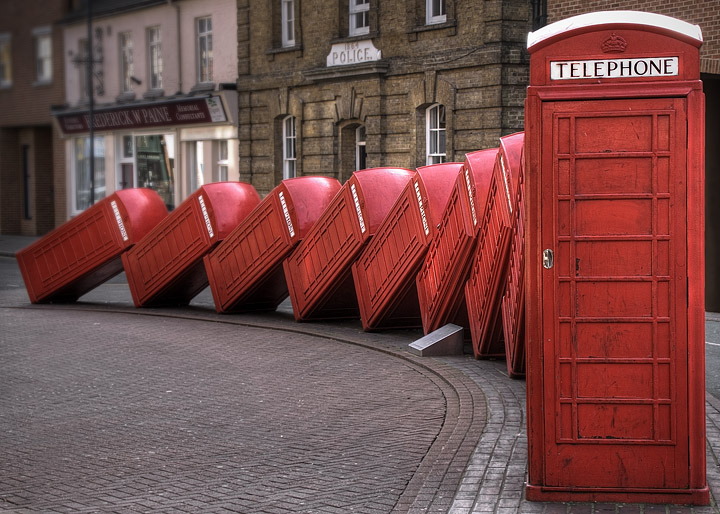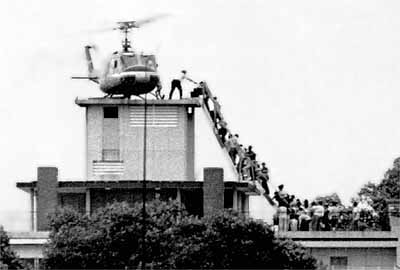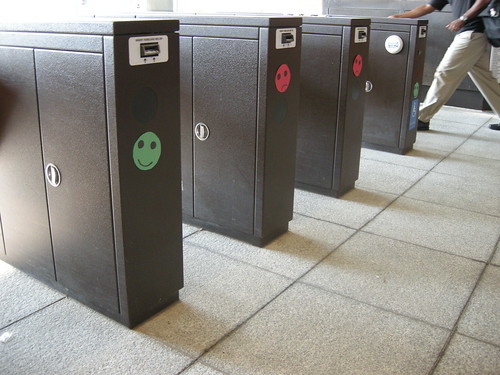
Starting Feb. 28, it will cost you a dime more per ride.
Let us know if it was 10 cents better.

This must be the punishment Jeter is talking about.
We also need to have a better understanding by our customers of Metro’s limitations. We have a 34-year old rail system, which is not like it used to be when it was new. It has old rail cars, track bed, power equipment, and communications. Some of our bus garages are 100 years old and some buses are 15 years old. As the equipment and facilities age they become less reliable, break down more often, and need more maintenance. We will have more service disruptions and delays than when the system was new.Customers will not and should not be understanding of more service disruptions and delays.
The Post reported in September that internal Metro documents showed the decision [to shift the 1000-series cars to the middle of trains] had been a public relations move. Metro officials said their decision was justified by an 11-year-old outside study involving a different kind of train and posted a detailed "correction" to The Post article on the agency's Web site.
In sworn testimony Wednesday, Metro engineer Mike Hiller said he disagreed with Metro's use of that study. "I could not conclusively agree that this information would support a decision on engineering to place a car into the center" of a series of rail cars, Hiller said. NTSB investigator Rick Downs asked, "Would that be a fair paper to utilize to rebut that point?" "No," Hiller responded. Metro spokeswoman Lisa Farbstein apologized to The Post after the testimony and retracted the rebuttal.
Busted!
We all knew moving those ancient 1000-series cars to the middle of the trains was a PR stunt. However, when the Post actually ran an article saying so, Metro's PR department feigned outrage.
In the rebuttal, which is full of a Farbsteinesque 'tude* (and a boatload of typos), Metro said "The idea that there will be less damage to a 1000-series railcar if it is placed farther from the impact of a collision is common sense."
Actually, Metro, common sense would be to listen to your engineers and level with the public.
When an agency will turn a blind eye to its own internal experts and go on to say anything or do anything just to cover its own behind without any regard for safety, one can only shudder at the thought of other lurking nightmares Metro is trying to bullsh*t its way out of.
And we still haven't heard a good explanation refuting the notion that putting the 1000-series in the middle of the trains might actually be more dangerous since those are often the most crowded cars.*"Our expectation was that the reporters would take the initiative to contact other transit agencies to ask if they were bellying railcars. Metro officials are responsible for knowing how Metro operates, not how other transit agenciesoperate [sic] their fleets. If a reporter wants to know what another transit agency is doing, they need to contact other transit gencies."[sic]

On Feb. 15, at 5:15 p.m., on the Green Line toward Greenbelt, the train was held at Shaw station for about 15 minutes while a blue-clad man with white "police" on his shirt back very purposefully walked through train cars with a pistol drawn, pointing it at the ground.
Yowzer!
Of course, there was no explanation from Metro other than "we're holding for a few minutes."
Imagine the carnage of a shoot out in a Metro car or on a subway platform?
Not content with terrifying riders with routine mechanical failures, Metro now allows police with guns drawn to walk through cars looking for ... what? Coffee drinkers? Cheetos eaters? Weapon toting gangsters?
Everyone in the car sat there, eyes wide open, mouths agape.
Is Metro going for its own reality TV show?
Could we expect Virginians with permits to carry concealed weapons to join in the posse and shoot out?
What's the policy on this?
 Mike Licht
Mike LichtAs can be seen in figure 10, the case where brakes are applied at the first of partial view of train 214 [the train that was struck] results in a stop short of the point of collision even with minimum brakes.The report also reveals that "there was no communication between the operators of train 112 [colliding train], the stopped train 214 or the Metrorail operations control center before the collision."
Figure 11 shows the case where nominal brakes are applied with a 3 second reaction time after the first of partial view of train 214. Again the train would have stopped short of the point of collision.
 Update: And so it begins. From Ron Holzer at WMATA:
Update: And so it begins. From Ron Holzer at WMATA:

The route was one of the 90 buses (either 90,92,93 -- definitely NOT 96). It was Feb. 19, 2010 at around 3:30-3:45 p.m. The bus, number 2134, was packed, hence me standing so close and taking the picture. And yes, she was driving at the time!Read more about Metro's zero tolerance policy here. Another distracted driver.
She drove to 14th andFloridaU. St., where she was relieved by another bus driver.
 From Scott:
From Scott:If there’s one thing I love, it’s a good Metro/Subway/Underground map. Some of them are design classics and really shouldn’t be messed with (London especially). Others have flaws, but are mostly tolerable (Boston not naming all stations on the Green Line really annoys me, but the rest of the diagram is quite well done).Check out the full post on his site, which includes more analysis of the current map and more detailed looks at his creation.
And then there are the diagrams that I simply can’t abide.
And, at the moment, foremost amongst those is that of the Washington, DC Metro system.

 The Metro Board approved public artwork for the Farragut West and Takoma stations. We're wondering if the glowing, cratered orbs will also come with the ghost businessmen depicted here in the mock ups of the Farragut West art.
The Metro Board approved public artwork for the Farragut West and Takoma stations. We're wondering if the glowing, cratered orbs will also come with the ghost businessmen depicted here in the mock ups of the Farragut West art. Gunn, right, will no doubt be making this gesture a lot during his stint advising WMATA.
Gunn, right, will no doubt be making this gesture a lot during his stint advising WMATA. Metro's communication abilities are already suspect, particularly at the front line level, and the snowy mess hasn't helped things.
Metro's communication abilities are already suspect, particularly at the front line level, and the snowy mess hasn't helped things. The Consumerist ran an interesting piece about how some American mass transit systems are looking into selling station and/or line naming rights to corporate sponsors.
The Consumerist ran an interesting piece about how some American mass transit systems are looking into selling station and/or line naming rights to corporate sponsors.Imagine giving public transit directions to your urban home in the future. "Oh, yeah, you take the Target Red Line, transfer at Comcast Station to the Apple Gray Line headed Fox Sports Westbound, and finally get off at Taco Bell Station." Seem crazy? Well, you have to name transit stations something, and both Metra and the Chicago Transit Authority are exploring the idea of selling naming rights to stations. They're not the first city to do this.
 UPDATE: Report of Red Line Derailment.
UPDATE: Report of Red Line Derailment. 
"... New York would see 12 to 15 inches — a lot, to be sure, but less than had piled up in places farther south during the storm last week. In New York itself, the worst was expected later in the day, potentially creating a nightmarish commute home. Some transit lines planned extra service for early afternoon, figuring that workers who made it into the city in the morning would abandon their desks before the regular quitting time."


 New Metro Board Member Marcel C. Acosta was nice enough to answer a few questions via email.
New Metro Board Member Marcel C. Acosta was nice enough to answer a few questions via email.
The King Street Station has five ticket gates for exiting the station. Four exit gates are on one side of the kiosk and the handicap gate also functions as an exit gate. On Jan. 15, it only had three functioning gates, including the handicapped one.
Of course the nice thing about the gates is that the Metro user usually does not know it is not functioning until they try to use their smart card/ticket.
This sort of slows things up as people behind you see there is a problem and merge into the operating gates. So, it sort of becomes a bottleneck if you have four lanes of people trying to merge into the ones that are working.
If Metro had top notch employees, they would monitor the flow and promptly take action to clear the non-functioning gates.
Of course today, A. Di*** was chatting with a roving Metro policeman in the warm kiosk. After being fooled into going to one of the non-working gates, waiting my turn to go through one of the two regular operating gates, I walked over to the window and simply said, “Why don’t you go clear those gates?”
I got a blank look, so I’m not sure the look was for “Why are you interrupting my conversation?” or one of “What do you want me to do about it?”
I turned and walked away.
I then decided to write a complaint and went back to the kiosk. There were no comment forms outside of the kiosk.
After ignoring me for about a minute while continuing to chat with the police officer, I asked for a complaint form. She handed it to me, and as I walked away, she and the Metro police officer were laughing. And of course, the gates were still not functioning.
I have to admit, I guess it was funny. I was the foolish one to expect the Metro employee to take any active interest in returning non-operating gates to functioning status or to expect the Metro police officer to do his job and not be shooting the breeze in the kiosk during rush hour.
Do I begrudge people chatting in a warm kiosk? No, but it should be secondary to keeping the operation flowing, including clearing the gates when they malfunction.
Perhaps they should change the logo on their vests from “How can I help you” to “How can you help me? After all, we Metro riders are there to serve the Metro employees, right?
A co-worker told me that the two gates were still not working when he came through about 15 minutes later.
Good Job Metro.



 Metro delays are so ... what's the word ... omnipresent now, and the way WMATA communicates about them so often makes the "situations" end up sounding so similar that it's hard to tell the major "incidents" from the minor "disruptions."
Metro delays are so ... what's the word ... omnipresent now, and the way WMATA communicates about them so often makes the "situations" end up sounding so similar that it's hard to tell the major "incidents" from the minor "disruptions."
 February 21, 2012
February 21, 2012 June 9, 2010
June 9, 2010

